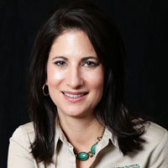-
Building relationships with insurance professionals: It is not uncommon for a restoration company to seek relationships with insurance professionals.
- To build trust in your abilities as a restorer and a service provider, it is good business to understand the trends, changes, and challenges that they as insurance professionals are facing. Perhaps you can help with a challenge or be a solution, but this can only happen if you are familiar with the insurance industry.
- Communications and Terminology: Every industry has their lingo and so does the insurance industry. Coverage A, HO3, ISO – If you understand and can communicate in industry terminology, it will help you build relationships, communicate your capabilities, and help those who you are serving.
- Be a better service provider: Understanding insurance policies and the industry can allow you to better serve the insured property owners, insurance adjusters, and anyone in your circle that you consider a direct or indirect customer. Please note that your knowledge should not be used to adjust a claim or determine coverage.
- Financial Protection: Understanding insurance policies will allow you to protect your company financially, regardless who is directly paying the bill.
- Marketing: Your potential clients and those you serve may enjoy a friendly reminder to review their deductibles.
- Long-Term Vision and Strategy: By reading the latest news, trends, and legislation regarding the insurance industry, you can think long-term and strategically. You will be able to find opportunities and anticipate trends that may directly or indirectly impact you as a restorer.
- Read a few insurance policies. My husband always said as a claims adjuster that he would help people understand the policy by stating the policy will “Giveth, taketh, and sometimes giveth back.” Once you read a policy, this will make sense. It is not just about understanding coverage in a broad sense; it is about understanding the language and presentation.
- Attend a class. We just had an IICRC CEC class, “Insurance for the Restoration Professional” at our training center, but you can also take classes that may be designed as continuing education for insurance professionals. These classes will educate you and keep you current.
-
Research and websites:
- The insurance department for the state(s) where you operate.
- Insurance Information Institute
- Verisk Analytics – Insurance Services Office (Xactware affiliate)
- Subscribe to insurance industry periodicals and other resources.


